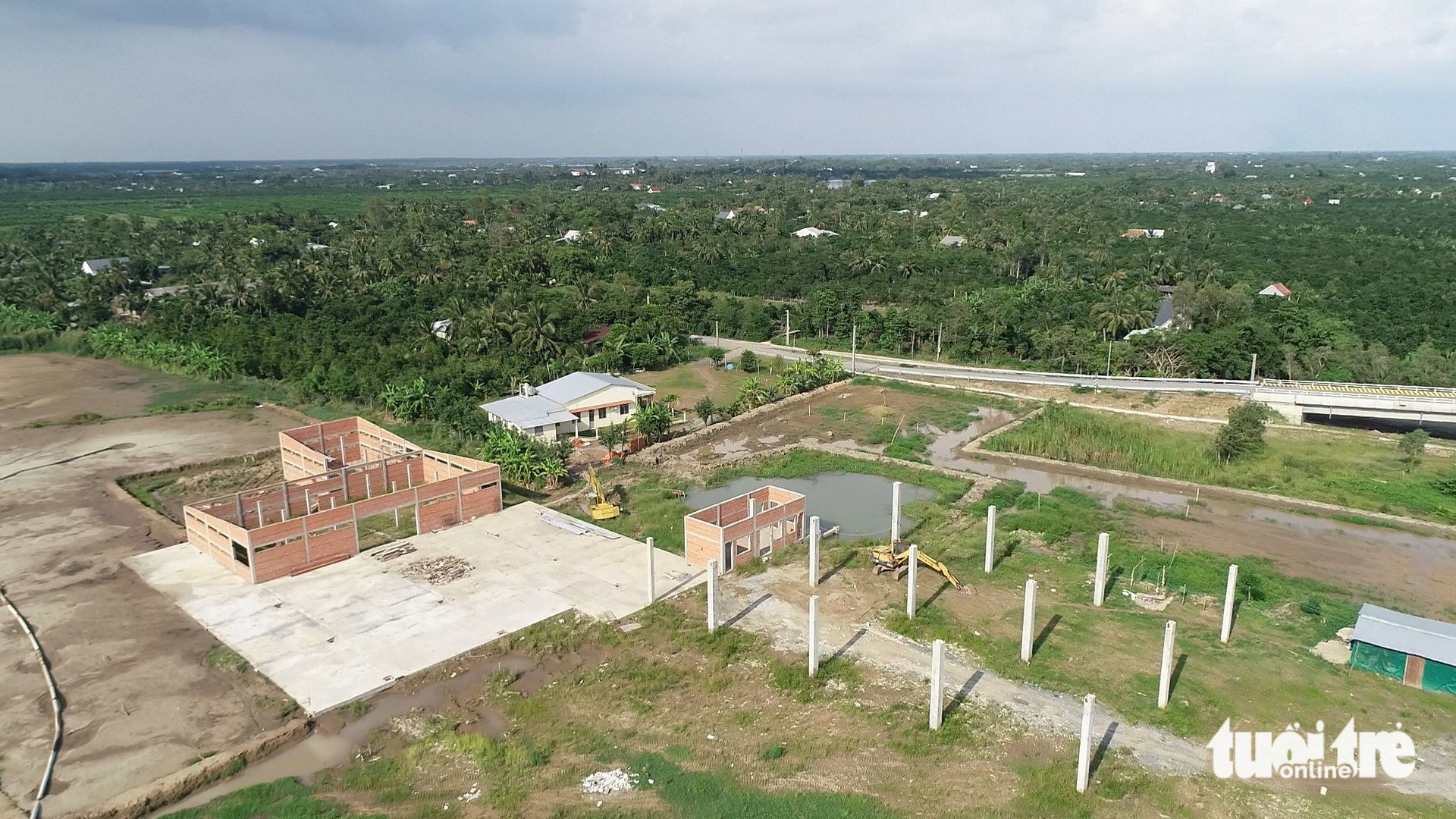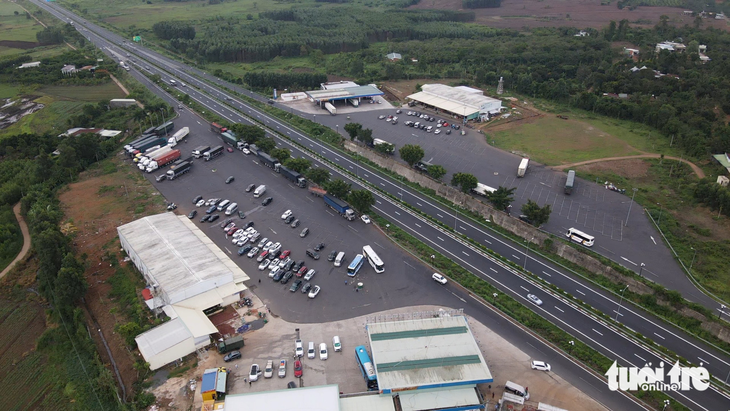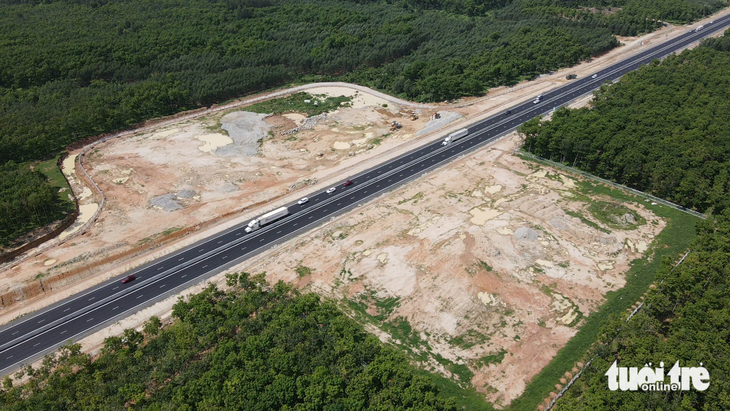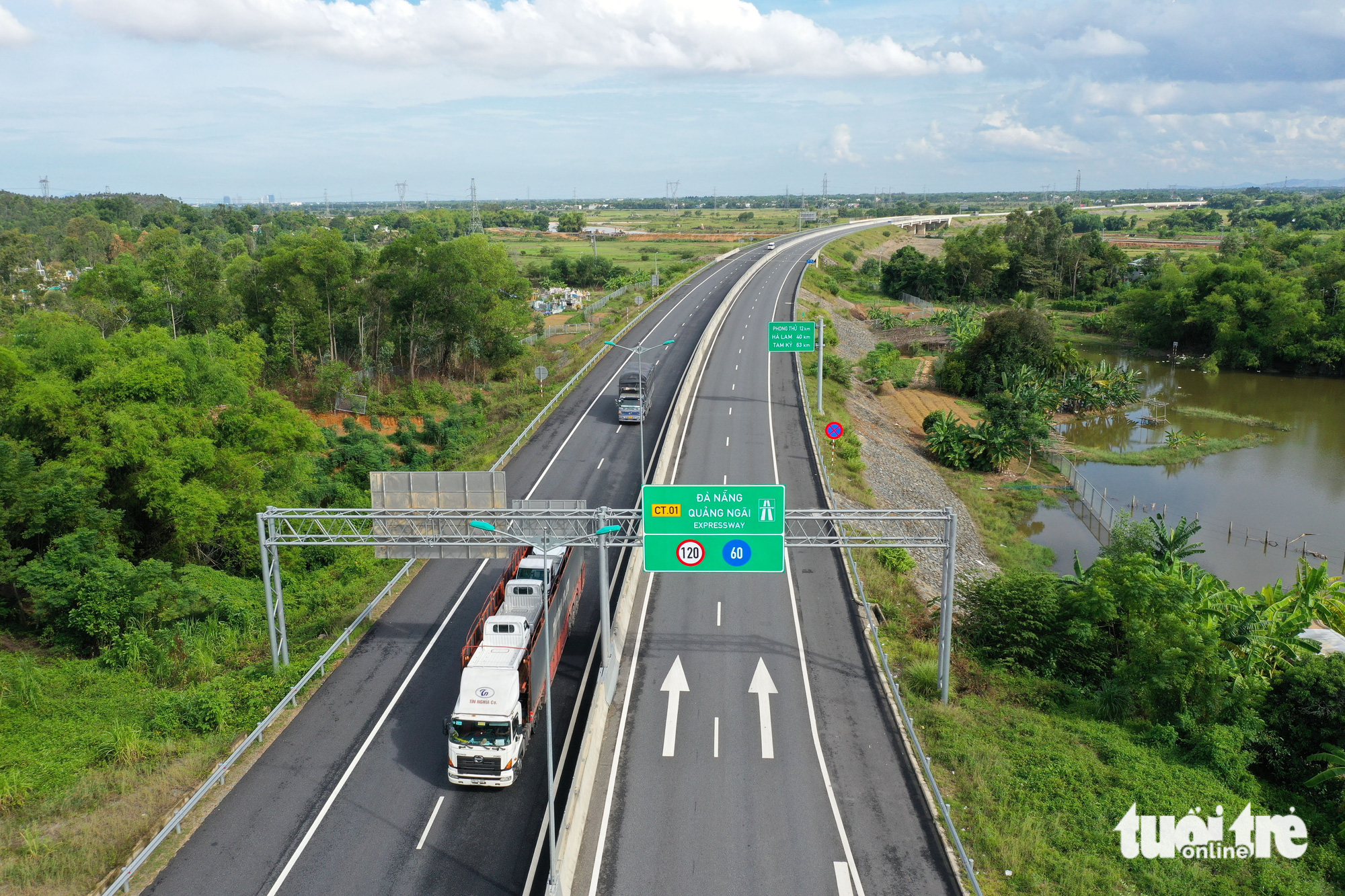Many drivers and commuters have complained about the absence of gas stations and rest stops along different expressway sections in central, south-central, and southern Vietnam.
The reported sections include the Da Nang-Quang Ngai Expressway in the central region, the Vinh Hao-Phan Thiet and Phan Thiet-Dau Giay Expressways in south-central, and the Ho Chi Minh City-Trung Luong Expressway and the Trung Luong-My Thuan Expressway in the south.
All of them are subprojects of the mammoth North-to-South expressway project in Vietnam that is projected to feature a total of 39 rest stops, according to the Vietnam Expressway Administration under the Ministry of Transport.
Among them, five rest stops are already operational, two others are currently under investment, and the remaining 32 stations are undergoing evaluation.
No rest stops
Nguyen Van Phuoc, who is residing in Lien Chieu District, Da Nang City and works as a driver, said he often drives passengers on the Da Nang-Quang Ngai Expressway, which connects the central city with Quang Ngai Province.
Prior to entering the expressway, he always advises passengers to make use of restrooms beforehand to prevent any inconvenience during the journey.
“The entire 140-kilometer road lacks any rest stops or restroom facilities, causing significant inconvenience for travelers who urgently need to address their personal needs,” said Phuoc.
“On such occasions, I am compelled to search for a vacant area or pull over in the emergency lane to allow passengers to relieve themselves.
“While it is relatively easier for men, it becomes quite uncomfortable for women and girls.
“Many people choose to endure the inconvenience and patiently wait until they can find a suitable location outside the highway to fulfill their needs.
“That only pertains to urination, the situation becomes even more challenging when it comes to defecation.”
Vuong Duy Tu, director of the operations center of the Da Nang-Quang Ngai Expressway, stated that the original plan for the route’s overall design included three rest stops, with each situated approximately 40 kilometers apart.
However, the construction of these rest stops had to be put on hold due to an investigation into building and management violations that occurred during the previous phase of the project.
According to Tu, the investor has initiated the necessary procedures and is poised to invest in the construction of these facilities, with expectations of completion by the end of this year or early next year.
Tu added that the construction, however, is also subject to a review by the Vietnam Expressway Administration for prevention of unnecessary and inefficient investment in rest stops along the North-South Expressway.
 |
| A rest stop is under construction along the Trung Luong-My Thuan Expressway in Cai Lay District, Tien Giang Province, southern Vietnam. Photo: Hoai Thuong / Tuoi Tre |
One sole rest stop
Nguyen Van Nam, a driver providing passenger transportation services to destinations in the Mekong Delta and southeastern regions, reported the same problem as Phuoc during trips on the Ho Chi Minh City-Trung Luong and Trung Luong-My Thuan Expressways.
Across the entire 113-kilometer route, consisting of a 62-kilometer stretch from Ho Chi Minh City to Trung Luong and a 51-kilometer segment from Trung Luong to My Thuan, there exists only one rest stop located in Long An Province.
Nam's approach whenever a passenger needs to attend to their personal needs is to drive to the nearest intersection, providing them the opportunity to alleviate themselves before resuming their journey on the highway.
The construction of two rest stops along the route in Cai Lay District, Tien Giang Province remains incomplete due to the lack of transportation infrastructure for delivering materials and equipment to the site.
 |
| An aerial view of the two rest stops at the end of the Ho Chi Minh City-Long Thanh-Dau Giay Expressway in Dong Nai Province, southern Vietnam. Photo: Duc Trong / Tuoi Tre |
Same for new expressways
The newly-opened Vinh Hao-Phan Thiet and Phan Thiet-Dau Giay Expressways, which stretches approximately 200 kilometers before joining with the Ho Chi Minh City-Long Thanh-Dau Giay Expressway, is not exempt from this situation.
Many vehicles make frequent stops at the rest stop at the end of the Ho Chi Minh City-Long Thanh-Dau Giay Expressway, where travelers take the opportunity to use restrooms, grab a snack, and prepare for the journey ahead to the Phan Thiet-Dau Giay section.
The situation is even more crowded at the rest stop on the opposite side of the section, particularly on weekends.
Due to the absence of rest stops throughout the entire 200-kilometer route, vehicles are unable to make necessary stops.
The construction of rest stops in Tuy Phong, Ham Thuan Bac, and Ham Tan Districts of Binh Thuan Province is currently pending investor selection.
 |
| An aerial view of two land lots designated for the construction of two rest stops along the Phan Thiet-Dau Giay Expressway in Ham Tan District, Binh Thuan Province, south-central Vietnam. Photo: Duc Trong / Tuoi Tre |
The existing legislation mandates that all road and transportation infrastructure must include pedestrian lanes, parking areas, rest stops, and other related facilities.
Furthermore, it stipulates that there should be at least one rest stop positioned outside the roadbed every 15 to 25 kilometers.
Additionally, a standard technical service station, equipped to provide fuel, minor vehicle repairs, and accommodations such as motels, restrooms, and restaurants, should be available every 50 to 60 kilometers.
Larger service stations are required at intervals of 120 to 200 kilometers.
Like us on Facebook or follow us on Twitter to get the latest news about Vietnam!















































